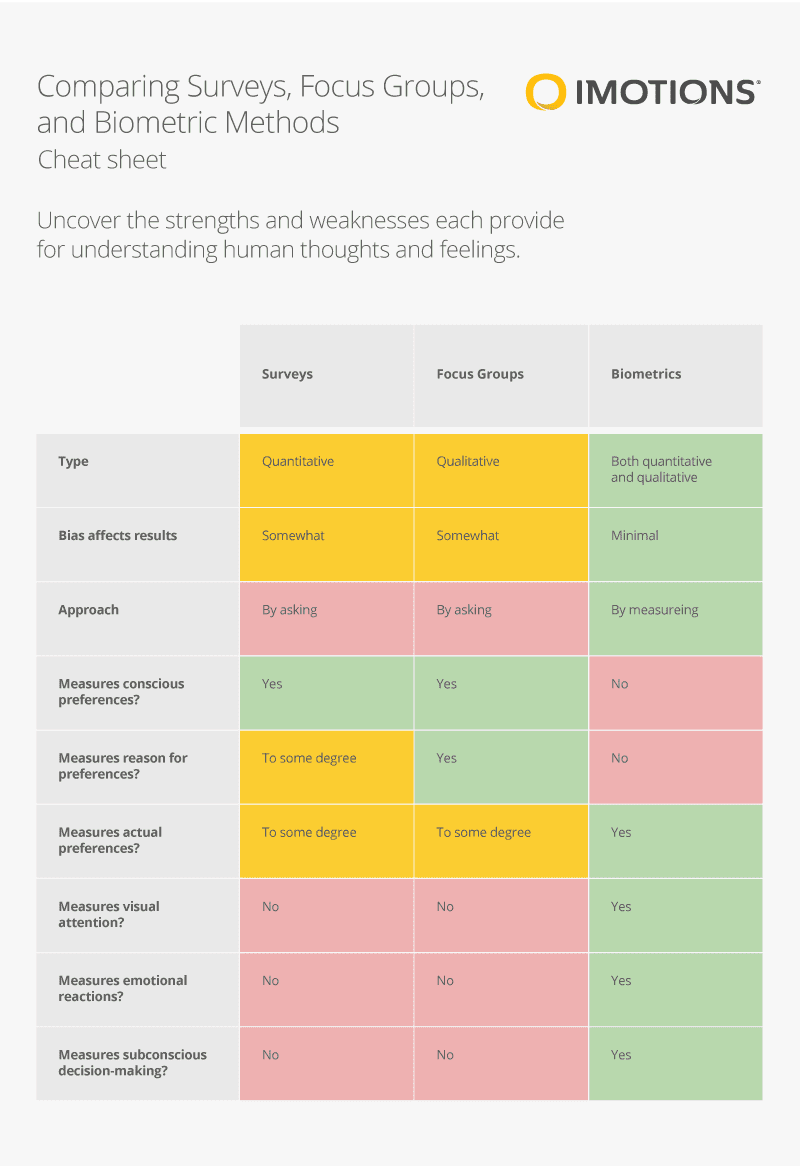The quest to understand human behavior is a huge part of scientific study, from psychology experiments to consumer research and well beyond. While many of these fields of study have traditionally used a direct question-and-answer approach, real progress has been made by delving deeper. Biosensor-based research provides the quickest and most accessible route to understanding how someone thinks, acts, and feels.
The best method available for understanding human behavior is therefore no single approach, but a combination of methods that integrate the best parts of each, providing an accurate and holistic view.
Below we have made an infographic that summarizes the main strengths and weaknesses of surveys, focus groups, and biosensors. It’s clear from this that getting the whole picture can be best achieved by using the different approaches in synthesis.

By using measures of bodily processes, it’s possible to objectively quantify how they relate to human behavior. From this, we can understand what triggers certain actions and reliably predict when that action will happen again.
The measurements are unbiased, and consistent, making them robust indicators of behavioral processes. As biosensor data collection consists of physiological measurements, they provide an unfiltered window into how an individual responds to stimuli or events in their environment.
Surveys and focus groups have been a central part of human behavior research for decades, and are valuable in that they provide answers about an individual’s conscious thought process, and reasons for their actions. This can be valuable information, depending on your research question.
I hope that you’ve gained a clearer understanding of why biosensors can add value to traditional research methods, and how the use of both will provide reliable answers to your research questions. If you’d like to learn more about human behavior, get a copy of our free guide – an accessible yet comprehensive introduction to human behavior.
Free 52-page Human Behavior Guide
For Beginners and Intermediates
- Get accessible and comprehensive walkthrough
- Valuable human behavior research insight
- Learn how to take your research to the next level












